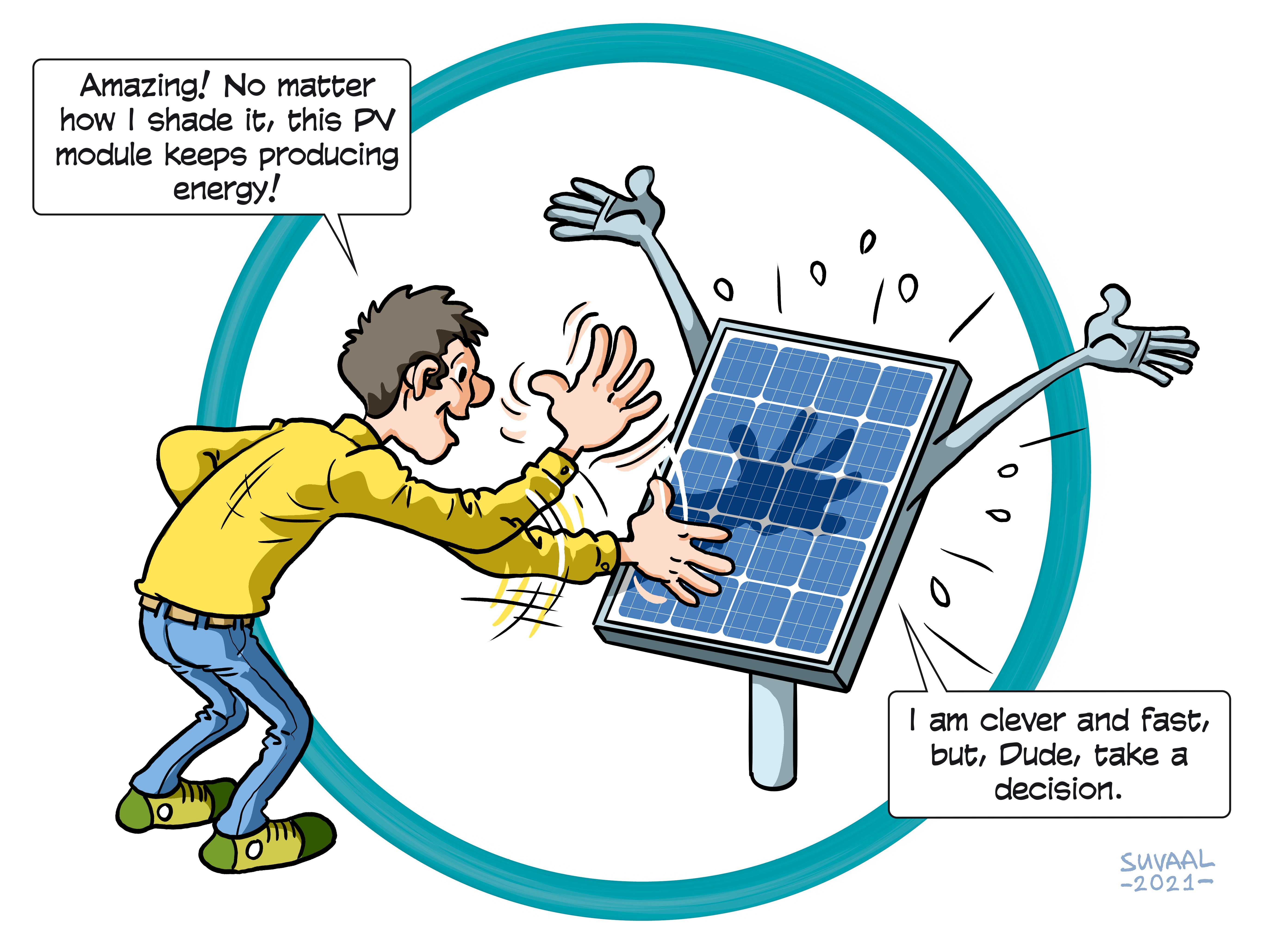Reconfigurable PV modules
Research Themes: Energy, Software Technology & Intelligent Systems


A TRL is a measure to indicate the matureness of a developing technology. When an innovative idea is discovered it is often not directly suitable for application. Usually such novel idea is subjected to further experimentation, testing and prototyping before it can be implemented. The image below shows how to read TRL’s to categorise the innovative ideas.
Summary of the project
Current PV modules are composed of many solar cells that are connected to each other in series – like a snake. The solar cells are organized in a number of strings, usually three, each protected by a bypass diode. When part of the PV module is shaded, the shaded cells cannot generate the same current as the unshaded cells and the fixed series-connection of cells inherently limits the ability of the PV module to produce power. The shaded string is bypassed through the connected bypass diode to allow the unshaded strings to produce their maximum power without being limited by the shaded cells. Parallel connection of the strings of solar cells solves this issue, since the strings share the same voltage but can have different currents. This implies that even the shaded part of the PV module can produce some energy instead of being bypassed. However, the drawback of connecting all the strings in parallel is that you will have higher losses in the interconnections and cables, and possibly high conduction losses in the power converters used to process the power of the PV modules. So, what if you could make the connections between the solar cells reconfigurable? In this case, depending on the shade cast on the PV module, the PV module will implement the most optimal connections between the cells. The researchers aim to do so by making the solar cells and modules smart by means of integrated electronics and novel algorithms. Through special electronics cells and modules can sense shade and take other measures which will help the module to make the optimal connections.
What's next?
The new module has the electronics in place to reconfigure the electrical connections between the strings and to decide on the best configuration using internal electrical measurements (current and voltage of each string). The next step is to design ad hoc power converters for reconfigurable PV modules and develop new algorithms that can not only increase the maximum energy output but also make decisions that are more oriented to the diagnosis or prognosis of the state of health of the panel to improve the PV module and system safety and facilitate operation and maintenance. Further integration of sensors to sketch the exact environmental conditions is also planned. Algorithms that make use of the additional information coming from these sensors to optimize production and/or enhance safety and lifetime at both module- and system-level will also be developed.
Contribution to the Energy transition?
With reconfigurable PV modules more surfaces become suitable for installing PV panels, thus increasing the capacity for capturing solar energy. With this innovation we no longer have to omit partially shaded surfaces. Subsequently, this innovative idea will facilitate integration of PV in infrastructure and create new design opportunities for architects and building/city planners.
dr. Patrizio Manganiello
dr. Olindo Isabella
Faculties involved
- EEMCS
